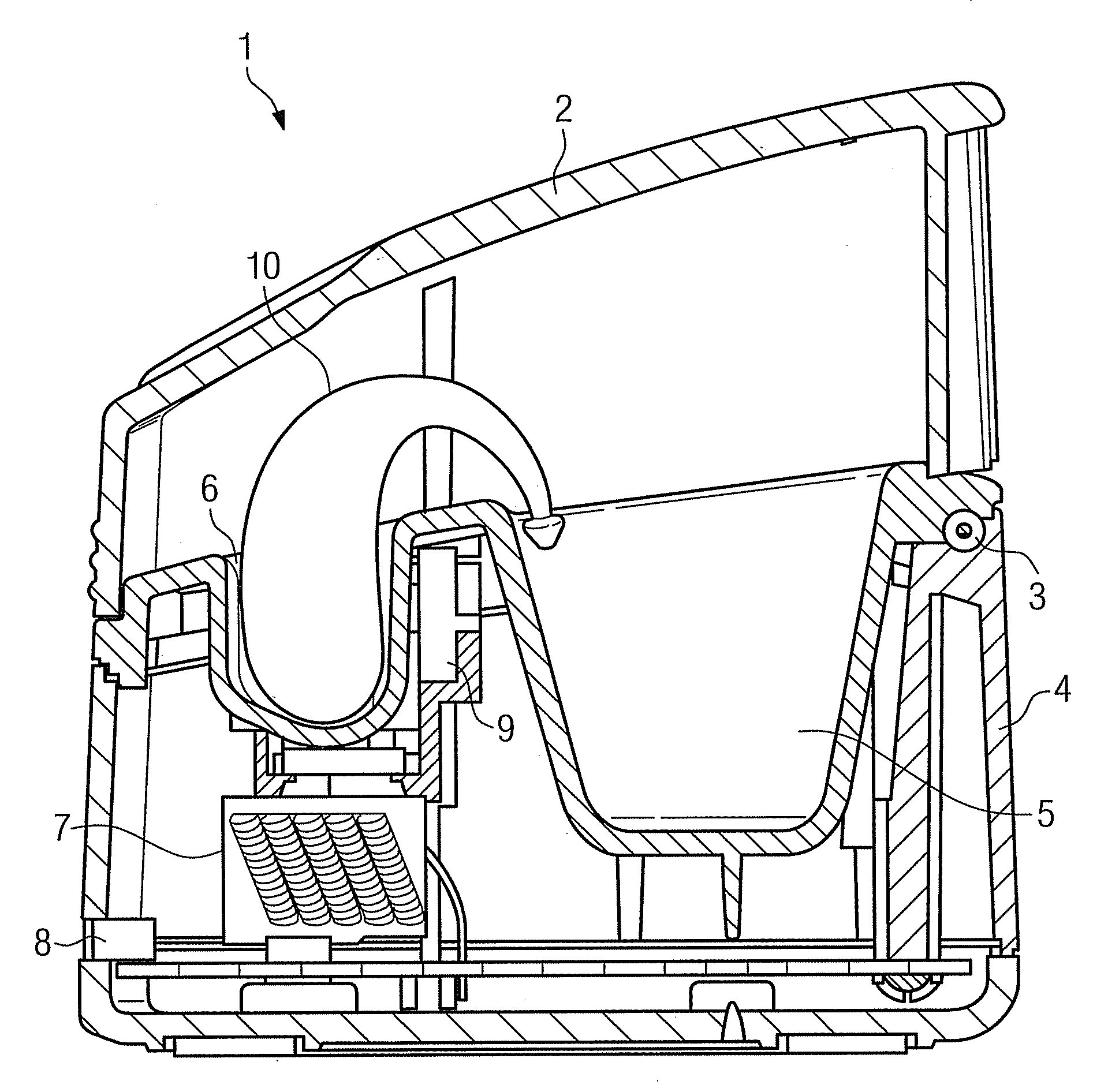Apparatus for drying hearing aids
a hearing aid and hearing aid technology, applied in drying, light and heating apparatus, furnace types, etc., can solve the problems of significant noise development, large motorized fans, damp hearing aids, etc., and achieve the effect of reducing the operating noise of the apparatus, increasing drying power, and increasing drying power
- Summary
- Abstract
- Description
- Claims
- Application Information
AI Technical Summary
Benefits of technology
Problems solved by technology
Method used
Image
Examples
Embodiment Construction
[0017]Figure shows a schematic sectional image of an apparatus 1 for drying a hearing aid. The apparatus includes a housing 4, which is closed by a cover which can be pivoted and / or swiveled about an axis 3. A molded part, into which a hearing aid shell 6 and an accessory shell 5 are countersunk, is located within the apparatus 1 and / or the housing 4. The hearing aid shell 6 is used for insertion of a hearing aid 10 for drying purposes. Accessories of the hearing aid, e.g. hearing tube or auditory canal inserts, can likewise be inserted into the accessory shell 5 for drying purposes.
[0018]In an advantageous embodiment, the apparatus 1 is not only used for drying but also for recharging rechargeable batteries in the hearing aid 10. In such a variant, corresponding charging contacts are provided in the hearing aid shell 6 as well as a charge current generator in the housing 4, which are however not shown in the drawing.
[0019]The apparatus 1 includes an electro-aerodynamic fan 7 as an ...
PUM
 Login to View More
Login to View More Abstract
Description
Claims
Application Information
 Login to View More
Login to View More - R&D
- Intellectual Property
- Life Sciences
- Materials
- Tech Scout
- Unparalleled Data Quality
- Higher Quality Content
- 60% Fewer Hallucinations
Browse by: Latest US Patents, China's latest patents, Technical Efficacy Thesaurus, Application Domain, Technology Topic, Popular Technical Reports.
© 2025 PatSnap. All rights reserved.Legal|Privacy policy|Modern Slavery Act Transparency Statement|Sitemap|About US| Contact US: help@patsnap.com

